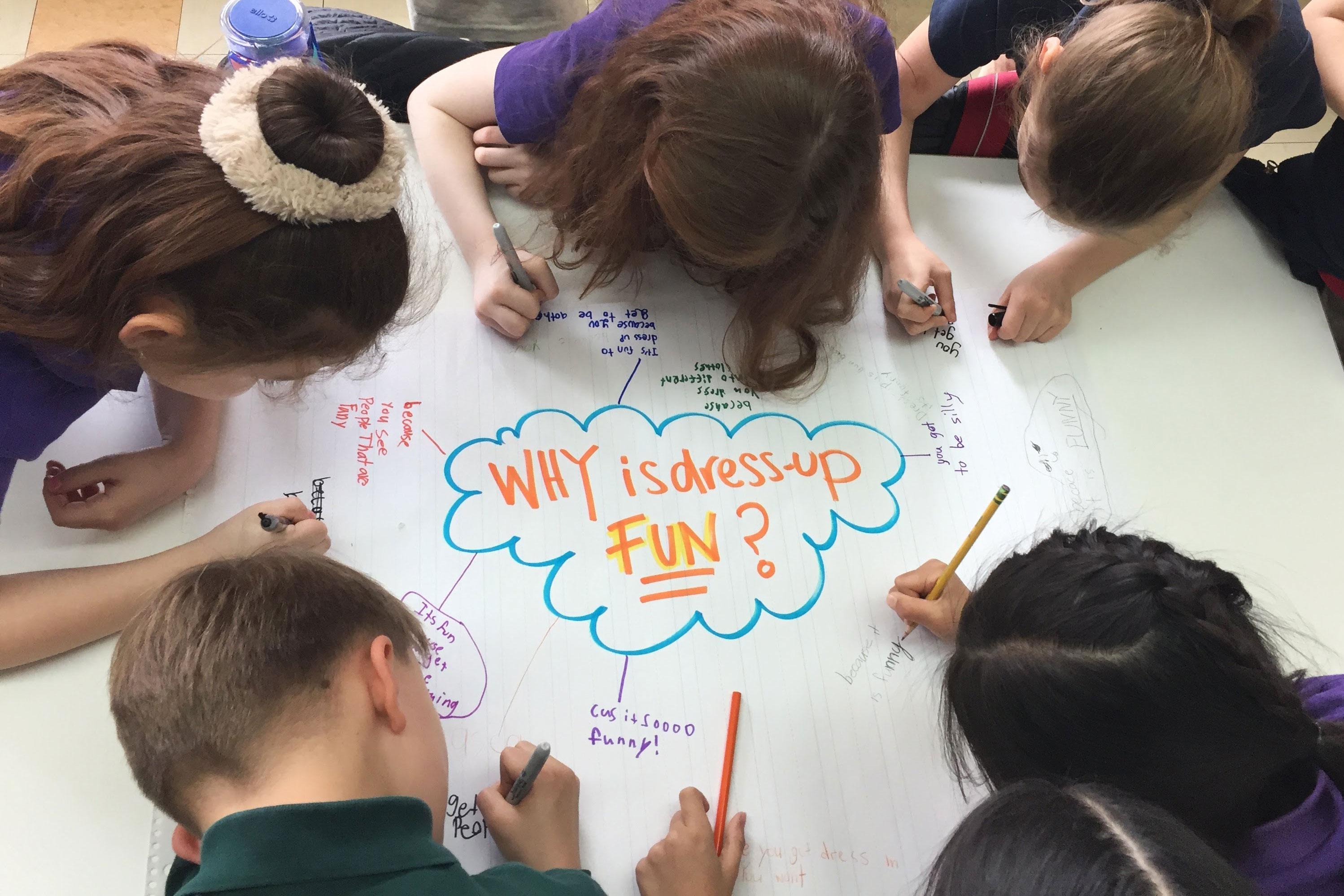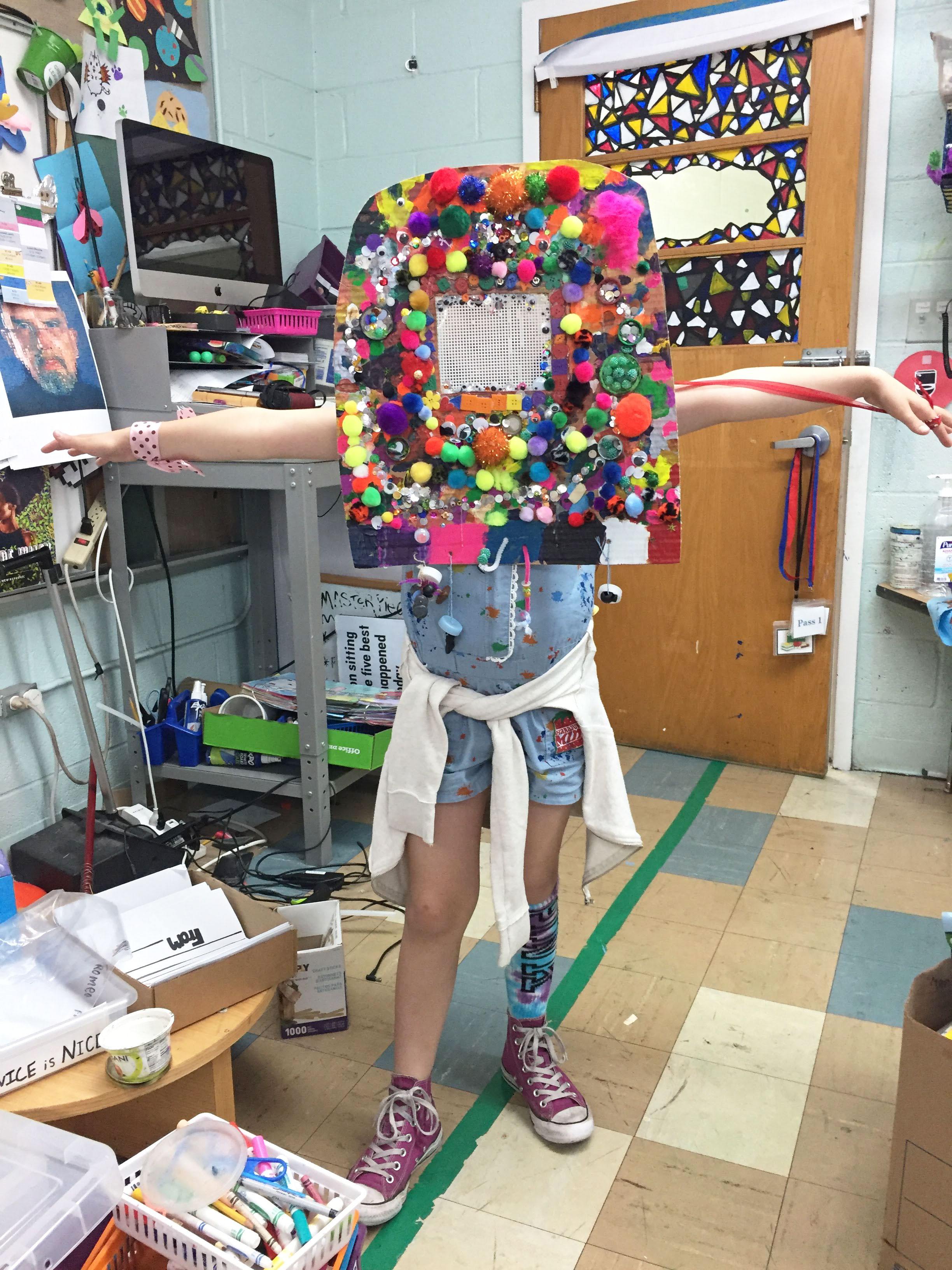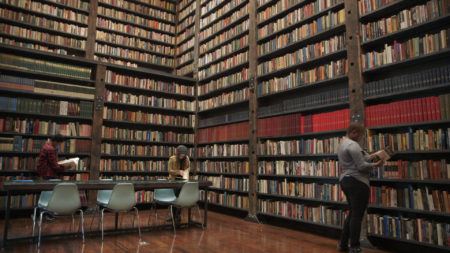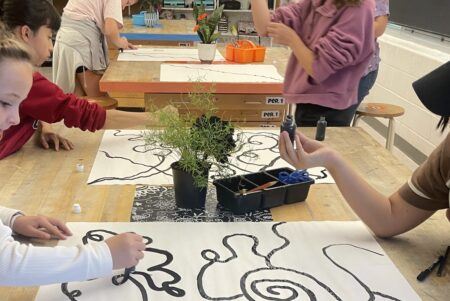Teaching with Contemporary Art
Utilizing Performance
As human beings, we all want attention: we want to be seen, we want to be heard, and we want to feel understood. This is even more true for young children who are learning how to connect with others by seeking approval and acceptance from peers and teachers. Educators often refer to “attention-seeking behavior,” which can be disruptive and happens when students speak out of turn, lash out with anger, or act cool in front of their friends. Behaviors like these are attempts to communicate and often represent a need—to be seen, to be heard, and to feel understood—that is not being met. Sometimes these behaviors seem like unstructured performances, taking place throughout the day. Play is an essential part of performance and is often missing from the school schedule. I currently teach in a progressive school environment that focuses on student-centered and experiential learning, but there is still a tremendous effort placed on preparing students for mandated standardized testing. As class sizes increase, and as students continue to come to school with a variety of emotional needs, providing attention for these performances can be increasingly difficult.

Production still from the Art in the Twenty-First Century Season 5 episode, Transformation. © Art21, Inc. 2009.
As art educators, especially in elementary school, we often face the assumption that teaching art is “cute.” That assumption is usually paired with an understanding of visual art that is limited to representational and abstract drawing and painting. Sometimes it might stretch to include collage or sculpture, but rarely does it extend to include installation or performance art. While teaching art is regularly a heartwarming experience, it is also a labor of love. I’m teaching young artists new skills and artistic techniques, but at the same time I am also teaching them how to think critically and creatively about the world around them. It is also necessary that I as an educator am able to meet my students’ needs for attention and emotional support. Most public schools are unable to offer classes in performance art (including drama or dance), which would provide students with more opportunities to be seen and to feel heard at school. In order to meet some of those needs, I introduced performance elements into my visual-art curriculum. In the most basic terms, performance art combines visual art with dramatic performance, and part of what makes performance so appealing is that it requires a certain amount of physical activity and play. “Play is often talked about as if it were a relief from serious learning,” mused the late Mr. Rogers, “but for children, play is serious learning.” Contemporary artists such as Cindy Sherman, Alex Da Corte, Nick Cave, and Trenton Doyle Handcock show us that putting on costumes, embodying alter egos, and pretending to be someone or something else in front of an audience or camera are exciting and accessible ways to consider taking play more seriously.
When looking at works by contemporary performance artists during class, I’ve asked my students to consider why they think it’s fun to play dress-up or to pretend. How do they feel when they get to dress-up? When do they get to dress-up outside of art class, and do they think grown-ups ever get to dress-up? These questions often elicit preliminary responses about Halloween and special occasions, but upon further discussion, students begin to think about transformation: how dressing up in different ways can make someone feel differently and how even putting on everyday clothing, including school or professional uniforms, can be an act of performance. We then talk about what it means to become someone or something else, and students share their thoughts about how pretending can teach us about someone else’s perspective. When students dress-up with the intention of creating characters and alter egos, they begin to imagine and articulate what the characters might be doing and how the characters might be feeling. It is a playful exercise in embodying empathy: understanding and sharing the feelings of another person.

Nick Cave performing a Soundsuit. Production still from the Art in the Twenty-First Century Season 8 episode, Chicago. © Art21, Inc. 2016.
Nick Cave continues to be one of my favorite performance artists to teach about in elementary school. Although his Soundsuits are playful, his inspiration and creative process are rooted in his emotional experience and ideas about identity and human nature. Sharing Nick Cave’s process for making art with young students provides them with an example, structure, or framework for creating artwork inspired by their personally meaningful experiences and for exploring emotional themes such as pride, hope, courage, and even sadness. As part of a class unit about wearable art, students were inspired to create suits of armor to protect them from their fears, badges of honor to show off what they were most proud of, and other wearable artworks that represented their hopes and dreams. The goal was to engage their emotions in the process of creating art and sharing their artwork with others, so that students could bring more awareness to their own feelings and develop their capacity to better appreciate the emotional experiences of others. As part of the art show at the end of the year, we created a red-carpet runway and invited students to walk the catwalk in their wearable art creations. Like Cave’s Soundsuits, these sculptural objects in motion came to life, as the students wore them and walked the runway. In this event, students who often seek attention from teachers and peers were given a spotlight, an audience, and an opportunity to be seen. As they exited the runway, students expressed feelings of excitement, empowerment, confidence, and joy.

Trenton Doyle Hancock in the studio. Production still from the Art in the Twenty-First Century Season 2 episode, Stories. © Art21, Inc. 2003.
Trenton Doyle Hancock is another effective artist to teach about in elementary school. The storytelling elements in his artwork and his extensive toy collection are accessible, appealing, and exciting for elementary-age students. When my students and I look at his artwork, we discuss the ideas behind superheroes, alter egos, and transformation. At first, I ask students to imagine superpowers they wish they could have; they mention flight, super strength, laser vision, animal transformation, and the ability to control the natural elements. We discuss why superheroes might have alter egos, to transform their identities from one persona to the other. Some students are able to make a connection to their own lives and talk about how they might act differently when they’re with their friends, compared to when they’re with their families. Then we talk about real-life superpowers and how everyday abilities can give us confidence and make us feel special. Students are encouraged to celebrate the skills that they are proud of, like being a good dancer or artist, being very smart or kind, being good at sports, or being able to remember lots of things. Celebrating students’ individual strengths is another way to provide attention to their everyday performances.
Integrating performance art in my lessons and teaching about contemporary artists has taught me that utilizing performance can be a powerful asset to support students’ emotional needs. By including performance and play into my visual-art curriculum, I can provide more structured learning opportunities to my students with attention-seeking behaviors, offering them multiple avenues to discover their voices and to connect with others in creative ways.





